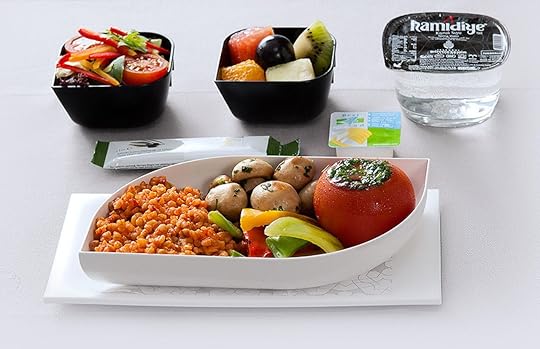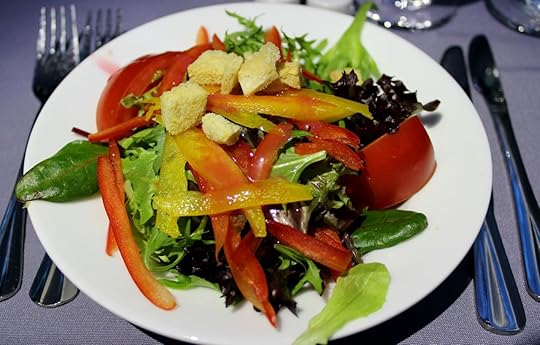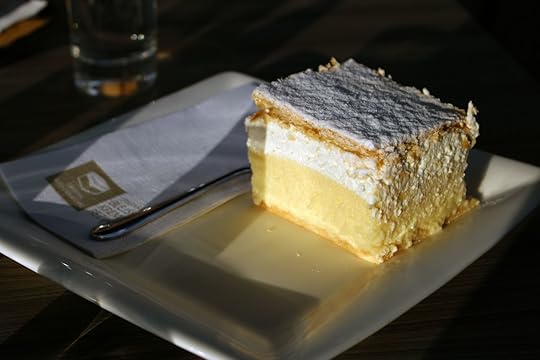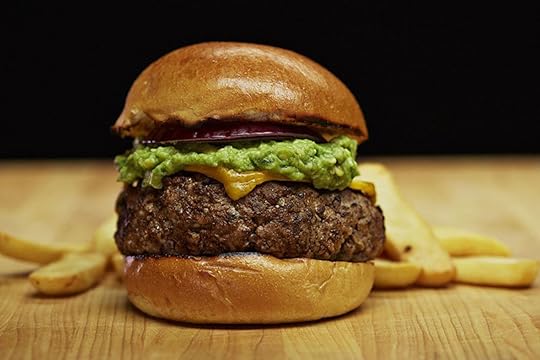Matador Network's Blog, page 1167
February 6, 2019
Hawaii may raise legal smoking age

Soon, Hawaii might only let you to smoke if you’re already on borrowed time. If a bill introduced by Democratic state representative and medical doctor Richard Creagan passes, Hawaii’s legal smoking age could be raised to 100. Creagan saw the negative effects of smoking first hand during his medical career, and described cigarettes in the bill as “the deadliest artifact in human history.”
Creagan told the Hawaii Tribune-Herald that cigarettes are “more lethal, more dangerous than any prescription drug, and it is more addicting […] We don’t allow people free access to opioids, for instance, or any prescription drugs.”
This isn’t the first time Hawaii has taken measures against smoking. In January 2017, it became the first state to raise the smoking age to 21. The minimum age in the rest of the nation is 18 or 19.
“We, as legislators, have a duty to do things to save people’s lives. If we don’t ban cigarettes, we are killing people,” Creagan added. According to the Centers for Disease Control, “Cigarette smoking is responsible for more than 480,000 deaths per year in the United States, including more than 41,000 deaths resulting from secondhand smoke exposure. This is about one in five deaths annually, or 1,300 deaths every day.”
The bill doesn’t propose raising the legal age to 100 overnight, however. It suggests increasing it to 30 in 2020, 40 in 2021, 50 in 2022, 60 in 2023, and finally 100 in 2024, essentially banning smoking altogether.
H/T: BBC News

More like this: New Yorkers lose $2.8 million over their lifetimes by smoking. And they’re not even the worst state.
The post Hawaii considers increasing legal smoking age to 100 appeared first on Matador Network.

Southwest to start flying to Hawaii

Although Southwest Airlines has been planning to launch flights to Hawaii since 2017, their efforts have been delayed — until now. The first test flight between Oakland, California, and Honolulu, Hawaii, took place yesterday.
First @SouthwestAir jet lands in Honolulu! It made it! Aloha and wooohooo! https://t.co/qswuhSVjl8
— Chris McGinnis (@cjmcginnis) February 6, 2019
The Southwest Boeing 737-800 aircraft flew without any commercial passengers — only airline employees and US government inspectors — with the goal of evaluating the plane’s long-range navigation and communication abilities. Before officially launching regular flights to Hawaii, Southwest must first obtain certification for overwater flying from the Federal Aviation Administration.
Yesterday’s flight was the first in a series that’ll be testing the aircrafts for emergencies above water, such as engine failures and diversions to the nearest airport.
Those tests are the last steps for the airline before it starts flying passengers to the Pacific islands. Southwest is so eager to get us on paradise vacations that it’s already creating a landing page for its Hawaii flights.
Southwest is hoping to provide nonstop service from Oakland, San Diego, San Jose, and Sacramento to Honolulu (on Oahu), Kahului (Maui), Kona (Island of Hawaii), and Lihue (Kauai). The airline also intends to provide interisland service.
Get your credit card ready and hit refresh — cheap flights are coming.
H/T: Travel & Leisure

More like this: The 12 coolest things to do in Kauai
The post Cheap Southwest flights to Hawaii are almost here appeared first on Matador Network.

When is Carnival

Even if you don’t buy into the whole Lent business of depriving yourself of delicious foods and festivities for 40 days before Easter, you can still take part in the grand celebration that comes before it: Carnival. Most Christian cultures around the world have made the final celebration before the fast their own, and some are particularly worth seeking out for their sheer scale, exuberance, and originality. If you’re looking to tap into the spirit of a nation, want to celebrate before you stop eating chocolate for a month and a half, or simply let your hair down with thousands of local and international revelers, then these are the festivals you can still plan for this year.
1. Santa Cruz de Tenerife Carnival — Tenerife, Spain

Photo: Luciano de la Rosa/Shutterstock
When a Carnival proudly proclaims that everything is allowed and your only obligation is to have fun, you know you’re in for a good time. That’s the tagline adopted by the Tenerife Carnival that takes place from February 27 to March 10 this year in the Canary Islands. This year’s theme is “The Deep Sea,” so you can expect to see fantastical marine creatures left and right. The event kicks off with the election of the Carnival Queen — a competition that requires candidates to parade on a massive stage wearing costumes that can weigh up to 200 pounds. Even if you miss this spectacle, the following weeks are full of bright parades, dance, costume competitions, and other festivities. It ends on Ash Wednesday with the “Burial of the Sardine,” a Spanish tradition that consists of people dressed as mourners parading a mock sardine through the streets and burying it, symbolically erasing all the excesses of the Carnival season. The Tenerife Carnival has the reputation to be the most Brazilian of all Spanish carnivals, so it’s pretty clear that attendees should brace for some serious partying. For the schedule of all the events, check out the program online.
2. Venice Carnival, Italy

Photo: Ulf Klose Media/Shutterstock
Most tourists know Venice as a labyrinth, canalized city to visit for living history, romantic gondola rides, and architecture. But for the thousands who make it to the annual Venice Carnival, it takes on a whole new appearance. That’s because the festival, which dates back to the 1100s and sports a long list of notorious attendees, including Casanova, is renown for the wearing of intricate masks. The festival lasts for 10 days leading up to Fat Tuesday, and you can expect elaborate costumes and plenty of late-night parties spurred on by the excitement of anonymity that only a mask can offer. This year, the Venice Carnival will take place between February 16 and March 5, and you can view the full schedule online.
3. Carnival of Binche, Belgium

Photo: Kobby Dagan/Shutterstock
The Carnival of Binche is a popular event that takes place each year in the small Belgian town of Binche. For nearly eight weeks, the city’s residents ready themselves with several quirky traditions, including small parades with live music and performances. But between Shrove Sunday (March 3) and Fat Tuesday (March 5) the city transforms, as beautifully costumed and masked paraders take over the streets to the sound of drums and violas. Fat Tuesday (also called Shrove Tuesday), the third and final day of the festivities, is always the most important. It’s on this day that characters known as “Gilles” don wax masks, put on bright costumes with bells and clogs, wield sticks to ward off evil, and congregate and dance on the Grand Place with other participants under fireworks. The festival dates far back into Belgian history with remarkably little changes over the years, which has earned it a UNESCO declaration as a “Masterpiece of the Oral and Intangible Heritage of Humanity.” The full schedule is available online.
4. Mardi Gras, Louisiana, USA

Photo: GTS Productions/Shutterstock
Mardi Gras in New Orleans, Louisiana is one of the most famous carnivals out there — people travel from around the world to experience the floats, late night parties, and famous beads that cover the whole city and its people. Although Mardis Gras has its roots in Europe, the annual festivities that take place in New Orleans are truly unique.
According to the 2019 schedule, the Mardi Gras Carnival officially starts on January 6 with the Phunny Phorty Phellows organizing a countdown and riding the entire St. Charles Streetcar line with crowds cheering and ready to catch the first beads of Mardi Gras. The season of parades, marching bands, and street parties come to a climax on Fat Tuesday (March 5), and the party ends at the stroke of midnight with the mayor and police riding on horseback through the French Quarter. And yes, you can drink in the streets.
5. Viareggio Carnival, Italy

Photo: marchesini62/Shutterstock
The annual Viareggio Carnival in the Tuscan city of Viareggio is a huge deal in Italy. Not only is there a complex of 16 hangars, dubbed “Cittadella del Carnevale,” dedicated to the event and the construction of the huge and famous papier-mâché floats, but the Viareggio Carnival is broadcast live on TV throughout Italy every Fat Tuesday. Each year, the event attracts 600,000 spectators to the celebrations that take place until Fat Tuesday in the city’s various districts. Most restaurants, bars, and clubs get in on the action by throwing their own masked Carnival parties. The highlight of the Viareggio Carnival is the parade of massive papier-maché floats that travel on a circular, one-mile route through the city. This year, the parade is scheduled for February 9, 17, and 23, as well as March 3 and 5. A full list of events is available online.
6. Trinidad and Tobago Carnival

Photo: John de la Bastide/Shutterstock
The Trinidad and Tobago Carnival starts just after Christmas and continues until Ash Wednesday, but it is officially celebrated on the Monday and Tuesday before (March 4 and 5 in 2019). This Carnival, known as the biggest street party on earth, attracts hordes of people on the Port of Spain to celebrate every year. Carnival Monday opens with a 4:00 AM parade of revelers covered in mud, paint, and grease. This early morning spectacle lasts until sunrise, at which point most people retreat for a few hours of rest. On Monday afternoon, and all day on Tuesday, thousands of masqueraders dress up in bright costumes and head out into the streets. Participants typically dance along the parade routes to the sound of soca, steelpan, and calypso music. One unique aspect of the Trinidad and Tobago Carnival is that anyone can get involved in the parade by purchasing a costume from one of the Carnival bands. Check out the full schedule of events.
7. Salvador Carnival, Brazil

Photo: R.M. Nunes/Shutterstock
Outside of Rio, the most famous Carnival in Brazil is the Carnaval Salvador, in the northeastern state of Bahia. Like in Rio, the event comes complete with samba groups, grandstands, and plenty of festive costumes. But since Salvador is a small city, the entire place becomes one big party — the event attracts more than one million tourists. In Salvador, anyone can dance in the streets. You can go as a pipoca and dance in the crowds for free, or you can buy a T-shirt and join in a “bloco” to be more formally attached to a particular dance group. (Just carry zero valuables with you and go with a friend for safety). The final, and more expensive option, is to buy seats in a camarote. Brazilians will tell you nothing beats the Carnival energy in its northeastern states, and the one in Salvador is a week-long party that lasts all day and all night. This year, the Salvador Carnival officially starts on March 2, but a few events begin even earlier, on Thursday, February 28. It ends on March 6, Ash Wednesday. The full schedule of events is available online. 

More like this: The 6 must-see Carnival festivals in Italy
The post The 7 most exciting Carnival celebrations you can still hit up this year appeared first on Matador Network.

February 5, 2019
Where to eat in Tijuana, Mexico

Tijuana sits at the crossroads of Mexico and the US. Its best-known landmark is probably the US border, the most frequently crossed port of entry in the world. Referred to as “The City of Migrants,” Tijuana is where Mexicans can live and commute to the US for work, and where Americans can escape for a night or two without getting too far from their comfort zone. For migrants coming from the South, it’s the last stop before entering the US.
Yet Tijuana, one of the fastest growing cities in Mexico with more than 1.5 million residents, is becoming much more than a brief checkpoint. Thanks to an increasingly diverse population, Tijuana is on the verge of becoming a destination unto itself. If you’re unconvinced, all you need to do is look at the food.
You don’t have to be a foodie to find good food in Tijuana. Because of the wealth of street food and a large number of good restaurants, a traveler could easily sniff around and stumble upon some great finds. Diversity is Tijuana’s strength here, with culinary inspirations both past and present shaping the modern food scene.
Tacos and burritos like you’ve never had them before

Photo: Maggie Rosenberg
Modern Tijuana is more than just tacos, but it’s impossible to talk about the city’s food without also talking about tacos. Tijuana taco vendors set up stands from their trucks and operate out of small shops all over the city. Birria de res (stewed beef) is the most popular morning taco, and most vendors sell out of meat by lunch. Steak tacos grilled over mesquite are popular mid-day options. After dark, the city turns to carne adobada (known as al pastor in Southern Mexico) to get them through the night.
Las Ahumaderas is Tijuana’s “taco alley” where carne adobada vendors stay open 24/7. Six vendors are lined up, competing for the attention of hungry night owls. The tacos here are done in what has become known as the classic Tijuana style: slightly larger tortillas than what much of Mexico uses, wood-grilled meats for filling, and heaps of very lightly seasoned guacamole on top.
Fried fish tacos and spicy cóctel de mariscos (seafood cocktails) are ubiquitous as well. They’re served up Baja style or Sonoran style. If you want to try something that you can’t get in San Diego, adventure to one of the Sonoran seafood spots, like Cahua del Yayo where they specialize in tuna fin tacos. The fin of tuna has a flabby texture and tastes much fishier than the tuna’s meatier parts. It will be an acquired taste for most but a memorable bite for all.
It wasn’t always tacos first and foremost, though. The all-night burrito stand, Bol Corona, is older than most taco spots. These Sonoran-style beauties are a favorite after-hours snack in Tijuana. Regional specialties from Sonora, Sinaloa, Chihuahua, and Durango are all easy to find around town, making Tijuana perfect for travelers seeking a crash course in the Norteño style of cuisine. In that spirit, flour tortillas and beef, Northern Mexico’s favorite ingredients, are common here.
A confluence of cuisines beyond the border

Photo: Caesar’s Restaurant-Bar Tijuana/Facebook
Tijuana is an international city — and not just because it hugs an international border. There are notable Chinese, Southeast Asian, Arab, and West African populations. People with Chinese heritage are the largest group after Mexicans and Americans, and there’s a vibrant Mexican-Chinese hybrid cuisine popular around Baja. Meals at Chinese restaurants in Tijuana start with colorful shrimp chips, a tradition that has since vanished north of the border. In general, the food here is reminiscent of the older Chinese restaurants in California in general. In Mexico, the old chop suey style of Chinese is still popular. Mexicali, the next town east, has the largest Chinatown in Mexico (as well as over 300 Chinese-owned restaurants).
One of the oldest restaurants in Tijuana is Caesar’s. It’s where the namesake Caesar salad was invented by an Italian immigrant named Caesar Cardini, who improvised the salad when vegetables weren’t being delivered in 1924. The dish is still made tableside as the ingredients to the famous dressing are listed off to diners throughout the emulsification process. Anchovies, parmesan, and garlic all power the pungent creamy dressing while a subtle Mexican touch — limes instead of Italy’s lemons — ties everything together.
Baja Med cuisine was also developed in Tijuana by elevating Baja ingredients with simple Mediterranean preparations: fried fish tacos with an airy tempura batter, for example, or octopus tacos laced with olive oil. Chef Javier Plascencia is the most famous chef in Baja Med and perhaps the most famous chef in Tijuana. His cevicheria, Erizo, is an upscale fish house offering fresh raw bar fare, Tijuana-style tacos, and ceviche that combines Peruvian and Mexican traditions.
Best restaurants and where to eat in Tijuana
Any lover of food should find a way to get to Tijuana. The Chapultepec neighborhood could be mistaken for a suburb of Los Angeles, and as Tijuana’s fortunes rise, it’s not hard to imagine a time in the near future when the city’s expanding suburbs are just as well known for food (we just hope they keep the street tacos). For your own trip south of the border, here are the Tijuana hot spots you need to try.

Photo: Bol Corona/Facebook
Bol Corona: Open since 1934, this burrito stand, named after a now-demolished bowling alley, has been making burritos with its own flour tortillas. The signature order is machaca, or dried beef fried with onions, garlic, and peppers.
Taqueria el Franc: This taqueria next to a tire-repair shop opens in the late afternoon. It’s widely regarded as having the best carne adobada in Tijuana. The tacos are made with fresh tortillas warmed over a fire, and the meat on the spit is treated with an unusually complex marinade.
Caesar’s: Open since 1927, this is one of Tijuana’s oldest and most iconic restaurants. The salad created here appears on menus from fast food franchises to upscale steakhouses. It also serves fairly good versions of Italian classics, Spanish tapas, and French bistro fare. It’s the perfect international restaurant for a very worldly city.

Photo: Erizo* Baja Fish House & Market/Facebook
Erizo Cocina de Mariscos: One of celebrity chef Javier Plascencia’s many restaurants, this upscale cevicheria specializes in raw and citrus-marinated dishes filled with ocean-fresh oysters, scallops, and the critter for which the restaurant is named: sea urchins. You could have a simple lunch of fish tacos here and be very happy.
Calhua del Yayo: This humble Sonoran seafood dive offers tuna fin, manta ray, and blood sausage tacos. If those flavors are too punchy for you, try the excellent octopus and olive taco with strong flavors of olive oil and tender braised octopus.
Taco Memo’s: A favorite taco truck of the many in town. This vendor specializes in tacos grilled over a wood fire on soft flour tortillas with a smear of refried beans. Add some crunchy chicharrones to take them to the next level. 

More like this: 7 destinations you’d never expect to have amazing street food scenes
The post Tijuana, the City of Migrants, is Mexico’s most underrated food city appeared first on Matador Network.

Best airlines for vegetarians/vegans

The overall percentage of vegetarians in the US has remained constant over the past 20 years, but the number of options for vegetarians and people trying to cut the amount of meat in their diet is higher than ever before. Airlines are taking note, and many are upping the number of plant-based options. But just because it’s available doesn’t mean it’s always easy to acquire. In general, vegetarians, vegans, and passengers with other dietary restrictions still have to jump through hoops or risk going hungry when it comes to finding a meal that fits their diet while flying.
Today, the best option for vegans and vegetarians is to bring your own food (make sure you know which food you can and can’t take through security). Many cost-cutting airlines don’t even serve meals on flights less than 2,000 miles, let alone plant-based meals. To add to the hassle, you have to decode what airlines mean with each vegetarian and vegan designation. In general, these are the terms to know according to the airline code:
Vegetarian meal: No meat or fish.
Vegetarian-vegan meal (VGML): No meat, fish, dairy, eggs, or other animal by-product. Stands in for a vegetarian meal as well as vegan.
Vegetarian lacto-ovo meal (VLML): No meat or fish, yet may have eggs or dairy.
Asian vegetarian meal TransPacific, or called vegetarian oriental meal (VOML): No meat, seafood, egg, or dairy that’s prepared with Chinese, Japanese, or pan-Asian spices.
Asian vegetarian meal TransAtlantic, or called simply Asian vegetarian meal (AVML): No meat, seafood, egg, or dairy that’s prepared with Indian spices.
Vegetarian Jain meal (VJML): Does not contain meat, animal by-products, mushrooms, or root vegetables like garlic, potatoes, carrots, and onions.
Raw vegetable meal (RVML): Raw vegetables only.
Fruit platter (FML): Nothing but fruit, and yes, that’s really the code for it.
In the best case scenario, you’ll end up with a full meal. In the worst case, you’ll end up with a single piece of honeydew melon wrapped in plastic. When you really want to get into the weeds — photos and all — you can check out AirlineMeals.net, a crowd-sourced site where users have posted more than 45,000 food photos from more than 730 airlines. Before doing that, however, take our advice so you don’t get caught flat-footed. Proper food, after all, is one of the best ways to prevent jet lag.
You may not get the best airline food in the world when ordering the vegetarian meal, but make sure you don’t get the worst. These are the most (and least) vegetarian-friendly airlines ranked from best to worst based on the availability of vegetarian and vegan options (not necessarily the quality, but having a wide variety of options is usually a great sign). Don’t forget to order ahead of time.
Information gathered from airline websites, Alternative Airlines, and Happy Cow.
The best airlines for vegetarian and vegan food

Photo: Aureliy/Shutterstock
Asiana: Vegetarian-vegan, VLML, VOML, AVML, VJML, RVML, and fruit platter
Dragonair: Vegetarian-vegan, VLML, VOML, AVML, VJML, RVML, and fruit platter
Bangkok Airways: Vegetarian-vegan, VLML, VOML, AVML, VJML, RVML, and fruit platter
Singapore Airlines: Vegetarian-vegan, VLML, VOML, AVML, VJML, RVML, and fruit platter
South African Airways: Vegetarian-vegan, VLML, VOML, AVML, VJML, RVML, and fruit platter
Air China: Vegetarian-vegan, VLML, VOML, VJML, RVML, and fruit platter
Air India: Vegetarian-vegan, VLML, VOML, AVML, RVML, and fruit platter
Cathay Pacific: Vegetarian-vegan, VLML, VOML, VJML, RVML, and fruit platter
Hong Kong Airlines: Vegetarian-vegan, VOML, AVML, VJML, RVML, and fruit platter
Korean Air: Vegetarian-vegan, VLML, VOML, AVML, VJML, and fruit platter
Iberia: Vegetarian, VOML, AVML, VJML, RVML, and fruit platter
Qatar Airways: VLML, VOML, AVML, VJML, RVML, and fruit platter
Turkish Airlines: Vegetarian-vegan, VLML, VOML, AVML, VJML, and RVML
Good airlines for vegetarian and vegan food

Photo: First Class Photography/Shutterstock
British Airways: Vegetarian-vegan, VLML, AVML, VJML, and fruit platter
Aeromexico: Vegetarian-vegan, VLML, VOML, AVML, and fruit platter
Emirates: Vegetarian, AVML, VJML, RVML, and fruit platter
Lufthansa: Vegetarian, VLML, AVML, and fruit platter
United Airlines: Vegetarian-vegan, VLML, AVML, and VJML
Air France: Vegetarian-vegan, VLML, and AVML
American Airlines: Vegetarian-vegan, VLML, and AVML
Delta: Vegetarian-vegan, VLML, and AVML
Alitalia: Vegetarian, Vegetarian-vegan, and AVML
KLM: Vegetarian-vegan, VLML, and AVML
Air Canada: Vegetarian, VLML, and fruit platter
Aegean: Vegetarian, VLML, and fruit platter
Worst airlines for vegetarian and vegan food

Photo: Christian Heinz/Shutterstock
Aer Lingus: Vegetarian-vegan and VLML
Icelandair: Vegetarian-vegan
WOW Air: Vegetarian-vegan
XL Airways: Vegetarian-vegan
Hawaiian: Vegetarian-vegan
Air Italy: Vegetarian 
More like this: The 50 best US cities for vegans and vegetarians
The post The best and worst airlines for vegetarians and vegans appeared first on Matador Network.

Get paid to go on spring break

Spring break is a special time. A time when the general rules of human behavior go right out the window and doing things like living off tequila and Pringles is perfectly acceptable. A time when the only cure for a hangover is to start drinking again, and the only physical activity you need to worry about is flip cup.
It’s a glorious time. And it doesn’t need to end when college does.
Not that we’re espousing rolling through Cancun 20 years after graduation. But one company is looking for a qualified individual to live post-graduate life like it’s spring break all year long. EduBirdie, an online ghostwriting platform where people can “hire writing professionals to help them with their academic writing assignments” is hiring what they call a Glory Days Preservation Specialist.
This real-life Van Wilder will be tasked with traveling the nation’s college campuses promoting the service that absolutely in no way promotes students buying papers off the internet. He or she will seek out influential college students to help spread the word, all the while hosting parties, going to clubs, and documenting it all on social media.
The job posting on the oh-so-Gen Z Monster.com asks crucial pre-interview questions such as, “Do your parents keep telling you ‘It’s time to grow up’?” and “Did you party all night the night before a paper was due and finished your essay hours before you had to hand it in?” to ensure they’re attracting the right person.
Job responsibilities will include recruiting on-campus influencers, as well as throwing parties, creating food and beverage menus, planning games, and finding venues in which to hold “outrageous events.” So, yes, it will be work and will probably involve a lot more logistics than beer pong. But as post-graduate jobs go, you could do a lot worse.
It’s all-expense-paid travel, a schedule that only has you working during the academic year, and a chance to live like you drink Jäger for breakfast and get paid for it — so probably more fun than literally anyone else you know is having and definitely better than looking for a “real job.” Which, if you’re paying a service to write all your college papers for you, may take a long time to find. 

More like this: Royal Caribbean will pay you $136,000 to cruise the world and post on social media
The post This company will pay you to celebrate spring break like a college student year-round appeared first on Matador Network.

Tarmac delay laws in the US

For the claustrophobic, it’s the most anxiety-inducing experience imaginable. For everyone else, it’s a cold version of hell.
You’re sitting on a trans-Pacific flight, settling in with your noise cancelling headphones and The Marvelous Mrs. Maisel, and the next thing you know the captain comes on saying there’s a medical emergency and you’re landing somewhere in remote, ice-covered Canada.
“Well ok,” you think. “We don’t want anyone dying. And that Tony Shalhoub is pretty funny. I can sit here for an hour.”
You land somewhere cold and snowy, the person having the emergency is removed, and you get all settled in to continue on your way to Hong Kong.
But the plane doesn’t move.
An entire season of Mrs. Maisel later and the plane’s in the same spot. The pilot gets on and thanks you for your patience (like you had a choice) and mumbles something about a mechanical issue. Hours pass, and you’re still stuck on the plane because the two customs officers at this remote Canadian airport are both snug in bed and not leaving any time soon.
It gets darker. It gets colder. All you’ve been offered to eat is a bag of pretzels and whatever’s in the mezze plate. After 16 cold, starving hours you finally get a replacement plane, but your flying spirit is effectively broken.
This first-world apocalyptic nightmare actually happened to a planeload of folks on a United Airlines flight last month, who spent 16 hours on the tarmac at Goose Bay airport in Newfoundland. Though US law mandates that airlines give you the option to deplane after a three-hour delay — four for international flights — because the plane was in Canada those rules didn’t apply. And all 250 people aboard were forced to spend a cold, cramped night in Atlantic Canada.
Though this situation is extreme, extended delays on the tarmac happen all the time. So what can you do after you’re involuntarily trapped on a grounded plane? And what is the airline required to do? Well, if you live in or are flying through the United States, all is not lost.
“The US is the only country with tarmac delay rights,” says Johnny Quach, Vice President of Product for passenger rights advocates AirHelp. “But airlines aren’t telling the passengers, and if they don’t know their rights, it’s hard to enforce them if they don’t know them.”
Unlike those poor people in Goose Bay, if your plane is grounded in the US, the airline is required to let you off after three hours. If they don’t, feel free to politely point this out to the flight crew and mention that the entire plane could take legal action.
“It’s the same as if any company doesn’t do what they’re supposed to,” says Quach. “But if people don’t speak out, airlines won’t tell you your rights.”
What, exactly, you’re entitled to is a little harder to define. Unlike with lost baggage and involuntary bumping, there’s not set compensation if airlines don’t let you off an excessively grounded flight.
In order to stave off lawsuits, airlines sometimes offer minimal amounts when passengers are held onboard too long. A friend of mine recently sat on an American Airlines plane for five hours and was offered 12,500 AAdvantage miles, useless to him since he wasn’t an American frequent flier. When he declined they offered him $200, or basically $40 an hour for his time.
Whether or not that’s acceptable is a personal decision and will obviously vary.
“In the case of tarmac delays, there’s no compensation amount. It’s related to your damages, so that’s different case to case,” says Quach.
Tarmac delay laws date back to 2010, spurred by a winter full of horror stories of people stuck on tarmacs for six hours or more. Though the laws have been effective, leading airlines to cancel flights that are excessively delayed rather than hold people hostage, airlines still routinely ignore them.
Frontier Airlines was fined $1.5 million in 2017 for keeping people on the tarmac too long over a number of incidents that year. The previous year, American Airlines was hit with a $1.6 million fine for breaking the same rules. But it’s not always malicious.
“Sometimes airlines are purposely ignorant,” says Quach. “But the second reason, and the one that’s more likely, is airlines don’t know they are supposed to [compensate you]; they don’t know why a flight was late, so it gets really grey.”
One caveat to the laws is if a pilot believes it isn’t safe to deplane, they can opt to keep you on longer than three or four hours. Though this would typically be in extreme cases like tropical storms or fires. And in the case of the United flight, risking an international incident.
Quatch suggests keeping all your boarding passes and receipts associated with extra expenses in case the tarmac grounding causes you to miss a connection or spend an extra night away from home. He also stresses that you are proactive about asking for compensation and make it clear to the airline, politely, that you know what you’re entitled to.
Though being trapped on a freezing cold plane overnight in Canadian winter isn’t likely, you may still find yourself sitting on a tarmac longer than you’d have liked. If you do, know your rights and get all the money that’s coming. Airlines aren’t going to pony up any more than they have to, and if you think 16 hours on an unmoving plane is worth more than $200, it’s up to you to get it. 

More like this: Why 87% of people don’t file claims for lost luggage, and how to file one
The post Here’s what you’re entitled to if you’re stuck on a tarmac for 16 hours appeared first on Matador Network.

Creamy cake from Lake Bled, Slovenia

Bled, the most popular tourist destination in Slovenia, attracts millions of visitors. It’s easy to understand why: the alpine lake with crystal clear water, a small fairytale-like island, and a mighty castle on the cliff with breathtaking views. But for local Slovenians, there’s another draw for Sunday trips to the often overcrowded and pricey Bled: a sweet and creamy treat called kremna rezina.
Kremna rezina is one of the most popular Slovenian desserts. It’s made with a golden buttery crispy crust, vanilla cream, whipped cream, and another crispy layer of buttery dough that’s all dusted with a rich layer of sugar icing. You can find it in cafes around the country, but the best kremna rezina is made in one place: Hotel Park in Bled.
A version of the cream cake dates back to the Austro-Hungarian Empire in the 1700s. Bosnia, Poland, and Slovakia all have versions, as well. No one does it quite like Lake Bled, however, and it’s all thanks to a chef at Hotel Park. Kremna rezina became a symbol of Bled gastronomy in 1953 after chef Ištvan Lukačević moved with his family from Serbia to Slovenia. He became the head of hotel’s patisserie where he started to experiment with an old Vojvodina recipe. After several attempts and variations he landed on the current recipe for kremna rezina (or kremšnita as the locals know it). The dessert rapidly became a draw for people in the surrounding area. In the 1970s, the hotel once made 6,000 in a single day. Today, around 3,000 are sold every day at Park Hotel and 6,000 are shipped to Austria every week.

Photo: sy-uname/Shutterstock
When the dessert celebrated its 60th anniversary, Hotel Park released some numbers on just how popular its dessert is. More than 14 million pieces have been sold, enough to form a six-meter cake wall around the entirety of Lake Bled or stretch end to end from the Park Hotel to Rome like some sort of yellow cake road.
The hotel uses the same recipe, ingredients, and process despite new appliances that would make the job easier. The women in the patisserie still knead the butter dough by hand and fold it seven times, the egg cream is still left to boil exactly seven minutes, the flour is still being imported from Serbia (the Slovenian one is said to be unsuitable because the air there is more humid), and each piece is still cut into a square that’s exactly seven centimeters long, wide, and tall. The dessert is always served fresh, and you’ll never be offered one made the day before.
It takes months of experience to make it perfect, and young confectioners have a lot of problems getting it right. One testament to Park Hotel’s supremacy is that when Hotel Park’s chefs make kremna rezina abroad, they bring all the ingredients with them rather than sourcing on site.

Photo: ZM_Photo/Shutterstock
This can all be lost on visitors. Bled has been considered one of the most beautiful European mountain resorts for centuries. Modern tourism started with Slovenian independence in 1991 and then opened up even more when the two-million-person country was admitted into the European Union in 2004. Bled transformed into a tourist destination for people around the world — especially for the Instagram types. The 8,000-person town has over 15,000 followers on Instagram and another 25,000 followers on the town’s lake Instagram account.
People go for the Julian Alps, pure alpine air, and the oldest (and most picturesque) Slovenian castle. They go for lake rides on traditional wooden flat bottom boats and for romantic weddings. But too often, they don’t even know they’re missing out on the famous cake.
As no trip to Bled is complete without kremna rezina, you don’t even necessarily have to visit Hotel Park if it’s out of reach. It’s also sold in several other hotels in Bled and even in the Nebotičnik café in the capital, Ljubljana. To make sure you’re tasting one that’s properly made, it has to pass the two-step test: When gently shaken, it has to swing, and when you stab a fork into the crust, it has to make a pop. Once it’s passed the test, all that’s left is to enjoy. 

More like this: The most calorific desserts around the world
The post Don’t visit Slovenia’s Lake Bled without eating this creamy cake appeared first on Matador Network.

Best burgers in New York City

Burgers are tried and true, and you can’t go wrong with eating one for your next meal. They’re envisioned by many outside of the United States as the standard American food, and we within the US embrace that wholeheartedly. In New York City alone, you can’t walk a few blocks without passing a place that includes burgers on its menu. As the home of Shake Shack, we’d be remiss not to mention it, and while the now-international chain is delicious in its own right, there are plenty of other places that also deserve your attention. Here’s where to find the best burgers in NYC.
1. Lucky’s

Photo: Lucky’s Famous Burgers/Facebook
Easily missed if you’re not keeping an eye out for it, Lucky’s has some of the juiciest burgers in Manhattan. It has quick service and is decently priced, and one of the best things about Lucky’s is the option to build your own burger and have it exactly as you want; you’ll pick a patty (meat and non-meat options are available), dressings such as lettuce or a fried egg, a type of cheese if any, sauce, and bun. If the stress of trying to choose the best combination is too much, then it’s readily prepared options like the Hell’s Kitchen will do the trick.
Where: Two locations in Manhattan
2. Bronx Alehouse

Photo: Bronx Alehouse/Facebook
Boroughs like Manhattan and Brooklyn are getting all the credit for their growing beer scene, but with its growing number of craft breweries and tap houses, the Bronx is a rising star that won’t let itself be ignored. Housed within a casual saloon setting, the Bronx Alehouse has a long list of local and international beers. It has tapped into one of the oldest combinations ever, burgers and beer, and it does it well. All burgers are served with brioche buns and a side of fries or homemade potato chips. Every week there’s a different burger special, but mainstays are the Drunken Onion Gorgonzola (topped with house-smoked bacon, IPA onion jam, Gorgonzola crumbles, lettuce, and tomato) and the Alehouse Burger (with pulled pork, spicy slaw, and onion rings). Head up to the northern borough for your next meal and you won’t regret it.
Where: 216 W 238th St, Bronx, NY 10463
3. Kings of Kobe

Photo: Kings of Kobe/Facebook
Kings of Kobe’s menu consists of only burgers, hot dogs, and fries, and everything is 100 percent wagyu beef. For the burgers, you can either order a half pound or pounder, and the prices will vary depending on which one you pick. The Queen Rules burger with prosciutto, pepper jack, lettuce, sweet chili relish, and jalapeño mayo will cost $15.35 for a half pound and $22.85 for a pound. Opt for a half pound and get a side of battered fries or BBQ mac and cheese balls. Gluten-free buns are available.
Where: 790 9th Ave, New York, NY 10019
4. Las Catrinas
View this post on InstagramA post shared by ASTORIA | Las Catrinas | NYC (@lascatrinasnyc) on Jul 16, 2018 at 9:20am PDT
Las Catrinas is a Mexican eatery through and through, from its menu to its decor. It was designed with Tulum, Mexico, in mind and brings the relaxed vibe of the beach town to the heart of busy Queens. Chef Leopoldo Tapia is from Mexico and brings authenticity to every dish. There are only two burgers on the menu, but heading to Astoria is totally worth it for La Gringa, a burger made with homemade pork and beef chorizo, cilantro, serrano peppers and parsley, quesillo, avocado, white onion, fried egg, and chipotle mayo. The drinks are great here too, so be sure to try a Blue Hawaiian or margarita with your food — or you can even ask the bartender to make you something completely unique and not on the menu.
Where: 32-02 Broadway, Astoria, NY 11106
5. The Organic Grille

Photo: Organic Grill/Facebook
Eating contests always seem to be for those partial to meats and dairy, but this is not so at the Organic Grill. Here, vegans and vegetarians can join in on the overeating fun. Stuff your face until you can’t anymore with the “I Beat The Machine Burger Challenge.” Within a 10-minute limit, you have to eat three Green Machine burgers, which consists of completely organic ingredients such as a health bun, mushroom patty, pesto, guacamole, lettuce, and tomatoes. It costs $27 to participate ($20 if you’re a group of six or more) and you’ll win a gift certificate for the price of the challenge, a diploma, and a picture on its wall of fame. The Organic Grill does serve other foods like breakfast fare, soups, and sandwiches, but you can’t go wrong with any of its burgers — even if you can’t beat the machine.
Where: 123 1st Avenue, New York, NY 10003
6. Black Tap

Photo: Black Tap Craft Burgers & Beer/Facebook
Black Tap is famous for its monstrous milkshakes, dubbed “freakshakes,” that cost $15 a pop and pack on topping upon topping. What many overlook in favor of the shakes, however, are its burgers. All made with the high-grade Pat LaFrieda meat, every burger comes with a side of fries, though you probably won’t even finish half of them because you’ll be so focused on the burger itself. For pizza lovers, there’s the pizza burger with zesty tomato sauce, fresh mozzarella, and shaved parmesan. And for those looking for something different, there’s the vegan burger with a black bean patty, vegan mayo, pickled onions, salsa verde, and cilantro. If you have room left for dessert, then opt for one of the freakshakes. We recommend sharing the Cookie ‘N Cream Supreme with a friend.
Where: Several locations around Manhattan
7. Jackson Hole

Photo: Jackson Hole
Opened in 1972, Jackson Hole is a small, family-owned restaurant chain. It’s known for serving up gigantic burgers that are seven ounces, and you’ll be lucky if you even get through half of the mouth-watering monstrosity. It’s even popular among celebrities with figures like former President Clinton, Jennifer Aniston, and Derek Jeter having visited. The menu has an extensive array of burgers and sandwiches, ranging from a Thanksgiving Burger to a Mexican Burger, but you might want to spring for the good ol’ classic plain burger for a chance at finishing your meal.
Where: Four locations in NYC
8. The Long Island Bar
View this post on InstagramA post shared by The Long Island Bar (@longislandbar) on Jun 10, 2016 at 3:15pm PDT
This spot is actually located in Brooklyn despite what the name suggests. There’s a lot of history here with it being run by the same family for over 50 years before being taken over by Toby Cecchini and Joel Tompkins, who restored and reopened the bar in 2013. Cecchini is credited with creating the cosmopolitan cocktail that we all know and love today, and if you pair that with the L.I. Burger, which is made up of two dry-aged beef patties, pickles, cheese, and fancy sauce, you’ll have even more to write home about. It’s also located within short walking distance of the Brooklyn Bridge Park waterfront, so head there after your meal for some pretty amazing views of the Manhattan skyline.
Where: 110 Atlantic Ave, Brooklyn, NY 11201
9. Emmy Squared

Photo: Emmy Squared/Facebook
Emmy Squared is primarily known as a pizza restaurant serving Detroit-style deep dish, and it does it well. But what you really want to pay attention to here is the sole burger on its menu. Named “Le Big Matt,” it consists of double-stacked Pat LaFrieda grass-fed beef patties, American cheese, greens, pickles, and Sammy sauce, all between two pretzel buns; it also comes with a side of waffle fries. It’s messy and pricey at $25, but you’ll definitely be getting your money’s worth.
Where: One location in Manhattan and one in Brooklyn
10. Minetta Tavern

Photo: Minetta Tavern
The original Minetta Tavern, back then named Minetta Brook, opened in 1937. It was frequented by the likes of Ernest Hemingway, E.E. Cummings, and other notable figures from all walks of life. Now, it’s located in Greenwich Village and is a fusion of French and American tastes, with the decor being reminiscent of a French bistro and the menu looking like that of a steakhouse. The prices are nothing to scoff at, but the quality and taste of the food here really makes it worth your while. One of the most well-known menu items here is the Black Label burger, which uses a selection of prime dry-aged beef cuts in its blend, with caramelized onions and fries.
Where: 113 Macdougal St, New York, NY 10012 

More like this: Where to eat in New York City if you’re vegan or vegetarian
The post Where to find the best burgers in New York City appeared first on Matador Network.

Best castles to see in France

In the same way that traveling to France should never be limited to visiting Paris, learning about its rich history and checking out some of its amazing architecture should never be constrained to a one-day visit to Versailles — there are countless castles in France that are mind-blowing, much cheaper, and less crowded. So, if you want to make your trip to France a little less predictable but still fill it with beautiful historical sights, leave the hordes of tourist sheep behind, hop on a train out of the capital, and hit these seven amazing castles.
1. Le Château de Chantilly

Photo: walter_g/Shutterstock
The Château de Chantilly is incredible for several reasons. First, it looks like it’s floating on the pond surrounding it — they don’t have that at Versailles. Second, it’s filled with amazing and diverse art pieces. Third, it’s less than one hour from Paris on the train. Henri d’Orléans, the son of the last king of France, rebuilt the Chantilly Castle in 1875 to make it the beautiful building that you see today. It turns out that good old Henri was a bit of an art collector, hence the fact that the castle now has the second largest collection of antique paintings after the Louvre. So, a visit to the Chantilly Castle is not all about looking at a very pretty building — there are amazing art galleries, beautiful stained glass, tapestries, lavishly furnished and decorated suites, a reading room that would make bibliophiles weak in the knees, crazy ceilings and wooden floors, etc.
That said, when you’re all “arted out” head outdoors and check out the gorgeous French formal gardens and large park. Note that there’s also a beautiful museum dedicated to horses in the Great Stables and equestrian shows if you’re more into animals than paintings and flowerbeds. Prepare for your visit by checking out the official website.
2. Le Château d’Angers

Photo: Mor65_Mauro Piccardi/Shutterstock
The Château d’Angers is a huge fortress of 17 towers. It may not look as refined as Chambord and Chantilly, but this 13th-century citadel is home to one of the world’s greatest art treasures: the Apocalypse Tapestry. The 14th-century tapestry is the world’s largest and oldest surviving medieval set of tapestries and a stunning piece of art. It is 328 feet long, made of colorful wool and silk, and kept in a dimly lit room where you can sit and look its details for hours. After you’ve had a good look at this masterpiece, check out the beautiful gardens outside and go up to the top of the fortress to take a walk and see an amazing view of the whole city. The castle is smack dab in the middle of the city of Angers, so once you’re done visiting, you won’t have to trek far to get a cup of coffee or hit a bakery for a pastry. Angers and its château are a two-hour high-speed train ride from Paris.
3. Le Château du Haut-Koenigsbourg

Photo: Leonid Andronov/Shutterstock
The Château du Haut-Koenigsbourg is a mountain fortress dating back to the 12th century. After being destroyed in 1462, rebuilt, besieged, pillaged, then burnt to the ground by the Swedish army in 1633, it was left in ruins for 200 years. When Alsace became part of Germany in 1871, Kaiser Wilhelm II decided to restore it entirely as a symbol of German power in the region. The restoration, done with extreme care so that the castle would look like it did back in the Middle Ages, ended in 1908. The Château du Haut-Koenigsbourg became a French property again in 1919 when the Alsace region was annexed to France after WWI. Check out the drawbridge, the three floors of the castle, and the Medieval garden, and make sure to have a good look at the exceptional views.
Because it’s sitting 2,500 feet above the Alsace plain, you can see the Vosges mountains, the Black Forest, and even the Alps when the weather is clear enough. The castle is closer to the city of Strasbourg (a one-hour car ride) than Paris, but Strasbourg is only two hours from the French capital by train and is certainly an underrated spot that’s worth visiting. Check out the official website to know more about the rates, hours of operations, and how to get there.
4. Le Château de Chambord

Photo: Leonid Andronov/Shutterstock
It took quite a while to get this castle built — 166 years, between 1519 and 1685 — but it was worth the wait. Although François the First, the king who commissioned the Chambord Castle, died much before it was achieved, he would certainly have enjoyed this magnificent edifice that he was planning to use as a hunting estate. The castle is immense and stunning inside and out and from every angle, as are the French formal gardens surrounding it. The most notable element of the building is its double-helix staircase located in the center of the castle, which two people can use to go up and down without ever meeting. This playful and mind-boggling architectural feature is said to be the work of Leonardo Da Vinci, with whom the King was friends.
When you’re tired of looking at the architectural details of the castle, go explore the park around the property — it’s the largest walled and enclosed park in Europe — and keep an eye out for the wild stags, deer, and boards roaming the woods. The Château de Chambord is a two-hour drive or 90-minute train ride from Paris. To plan your visit, check out the rates and hours of operation on the official website.
5. Le Château d’Ancy-le-Franc

Photo: Château d’Ancy le Franc/Facebook
With its simple square shape, minimalist white facade, and small inner courtyard, the Château d’Ancy-le-Franc may look plain compared to some of the immense and ornate castles to be found in France, but it packs an unexpected punch. Only 20 years ago, the 16th-century castle was abandoned, and it was raining inside this incredible building. Today, after years of renovation and some amazing landscaping work, it’s a stunner — inside and out. It is said that its elegant inner courtyard was used as a template for the one at the Louvre — not a shabby reference. Inside, coffered ceilings, intricately assembled tile floors, and detailed murals make Ancy-le-Franc a masterpiece of Italian Renaissance architecture.
But don’t stick to visiting the castle itself — there’s a 123-acre park surrounding it that you should take the time to see as well. The Château d’Ancy-le-Franc is one hour away from Paris by high-speed train. For more information about rates and hours of operation check out the official website.
6. Le Château de Chenonceau

Photo: Antoine2K/Shutterstock
The Château de Chenonceau was first built by a woman in 1513 and was embellished, restored, and protected by women over the centuries, hence its nickname “the Ladies’ Castle.” From 1914 to 1918, the castle was turned into a military hospital, complete with an operation room, an X-ray machine, and 120 beds for the soldiers in need of care. What makes this castle so unique and stunning is the fact that it was built above the Cher river, so take the time to look at it from the outside — it’s quite a sight. Inside, the chapel, the gallery, the kitchens, and the many other rooms are truly gorgeous — you don’t have to be an art expert to appreciate the level of details in the tapestries, ceilings, wooden floors, furniture, etc.
While outside, check out the French formal gardens and the vegetable and flower garden, and have fun in the green maze. Splurge a little and book a table for lunch at the Orangerie gastronomic restaurant for a royal experience. The Château de Chenonceau is only one hour from Paris by high-speed train.
7. Le Château du Clos Lucé

Photo: Clos Lucé Parc
The Château du Clos Lucé is famous for being the home of Leonardo Da Vinci from 1516, until his death (at the castle) in 1519. Although the castle never belonged to the artist, the king of France had invited him to stay in this beautiful pink-brick dwelling. If you got frustrated by not being able to see the Mona Lisa properly at the Louvre because of the crowds, we suggest you check out this castle that celebrates the mind of Leonardo Da Vinci. The 12th-century castle and the park surrounding it are filled with the work of the artist and engineer, including paintings, sketchbooks, models of machines created according to his designs, etc. You can also visit his studio, as well as his bedchamber. The Château du Clos Lucé is also only one hour away from Paris by train. Check out the rates and hour of operation on the official website. 

More like this: How to make the most of a one-day visit to Versailles
The post 7 castles to visit in France besides Versailles appeared first on Matador Network.

Matador Network's Blog
- Matador Network's profile
- 6 followers



